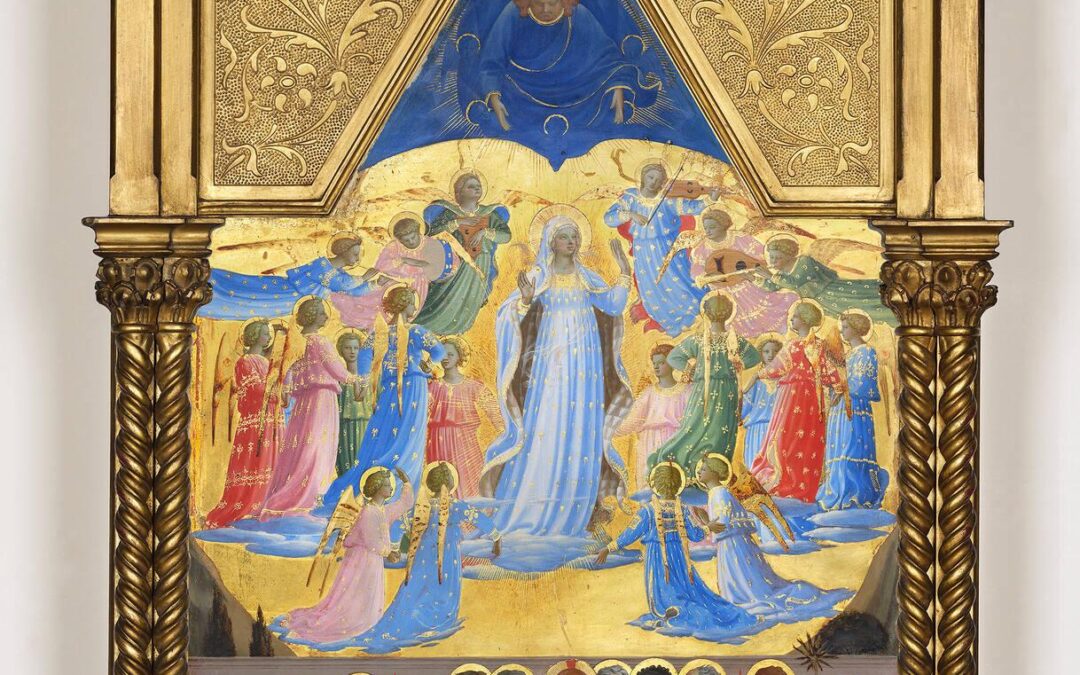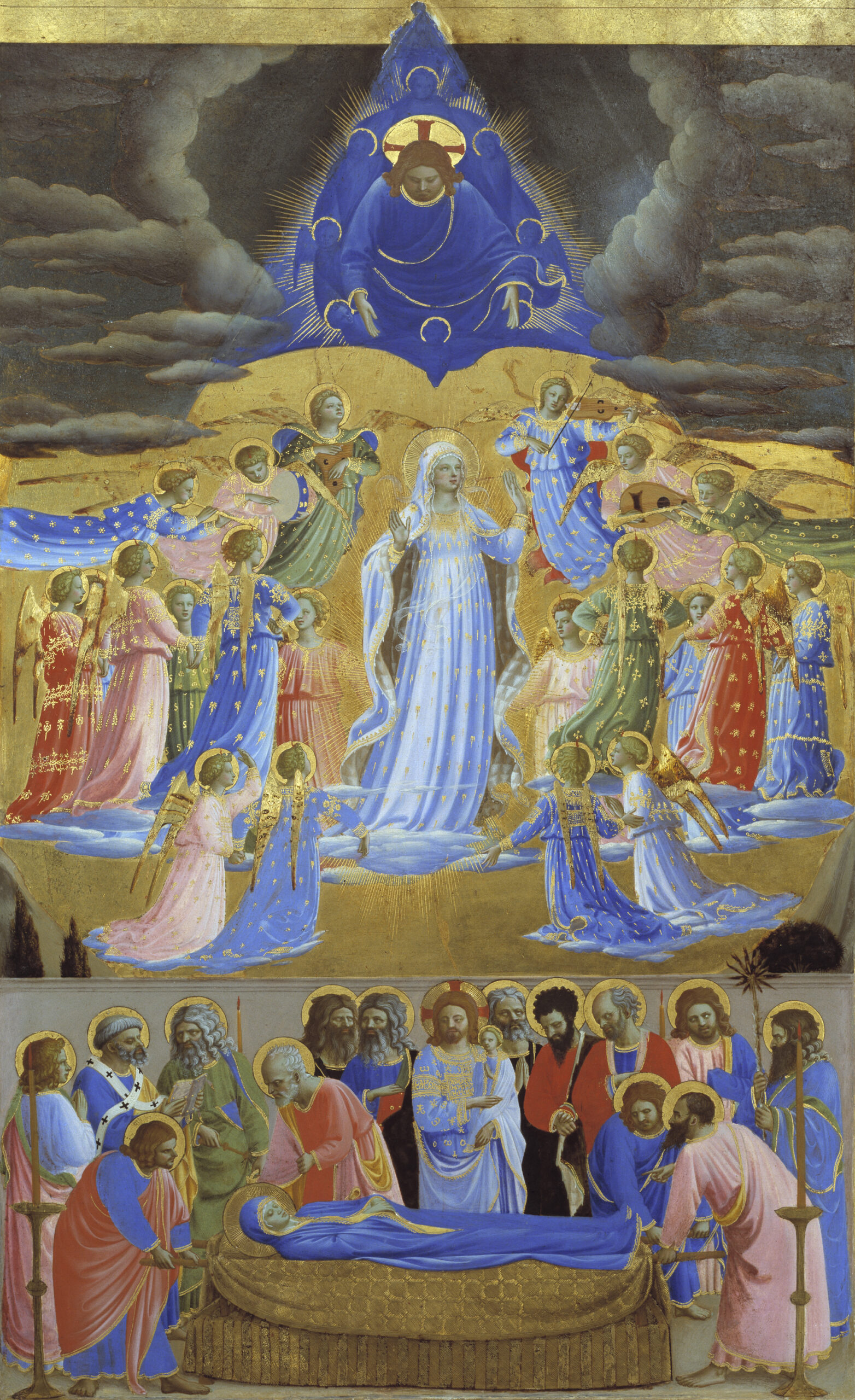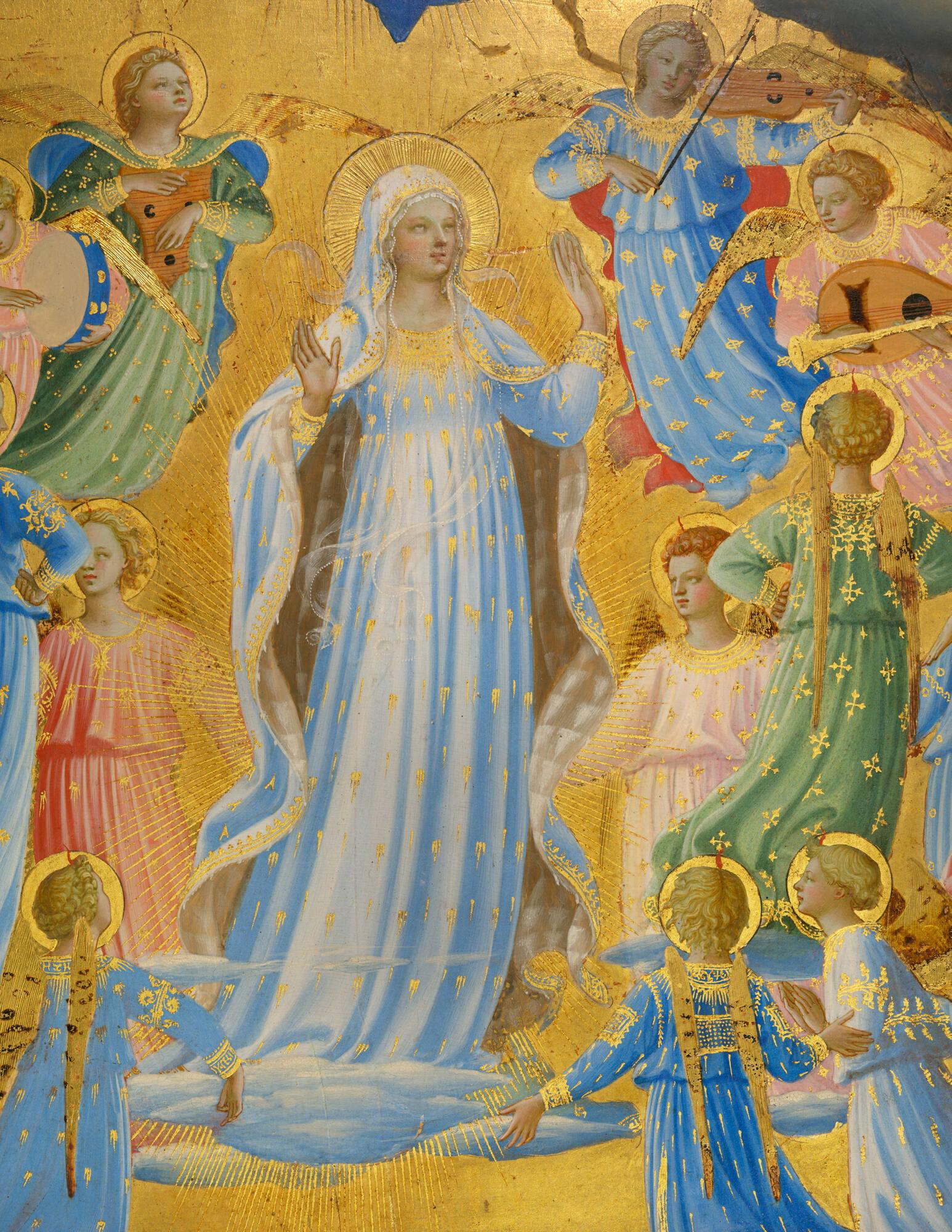Fra Angelico (‘angelic brother, a posthumous title) was born Guido di Pietro in Tuscany around 1395. He trained in Florence as a manuscript painter in his earlier life. Later, he entered a Dominican priory in San Marco in Florence. He was described by Vasari in his Lives of the Artists as having “a rare and perfect talent”. As this Sunday is the Feast of the Dormition and Assumption of the Virgin Mary, I have dedicated this post to Fra Angelico’s breathtaking rendition of mystery.
The Assumption of the Virgin Mary is one of the glorious mysteries of the Holy Rosary. It is not in the gospels but there is a part of it in Revelation and another in church dogma. The belief is that when Mary came to the end of her earthly life, she did not die. After her dormition (falling asleep) she was assumed into heaven, where she was crowned with twelve stars. The below was Fra Angelico’s interpretation of the mystery, which was an altarpiece at the Basilica of San Marco in Florence.
When I first saw this in the week I was completely dazzled and taken aback by it. The resplendent jubilant colouring and breathtaking detail struck me. Let’s take it from the bottom up. The dormition itself is painted with great reverence. This is a most solemn event. Those gathered are suitably mournful. A host of angels surrounds her. She is vested in brilliant blue.
In the lower one, the deceased Virgin lies in deathlike sleep amid a gathering of apostles. Four are about to lift her bier — you can sense from their postures that they are anticipating its weight — while others whisper among themselves or stare in numbed sorrow. Jesus presides over all, carrying Mary’s soul, in the form of a bright-eyed child tucked in his arm. New York Times
The top panel is the most striking. Four angels is in different shades of blue and white hail the arrival of Mary with trumpets. Their wings and the fabric of their robes is so very beautiful. Beneath Mary’s feet there are clouds and fronds of gold which remind me of a fine monstrance. The light goes from her feet and around Mary herself. This makes her look even more glorious than the bright blue and gold vestment she is wearing. The vestment itself is extraordinary. Several shades of blue, white and gold combine to give her an aura which is suitable for her new place of residence. The veneration with which Fra Angelico has rendered her is apparent, and renders the viewer numb in amazement.
The second scene, above, is about release. The Virgin soars upward, groups of angels execute a vigorous circling dance. If you look carefully you’ll see that their movements raise a breeze that lifts the hems of their gowns.
Close looking is precisely what this exquisite show encourages. It’s details that keep you looking: faces of saints as particular as high school yearbook portraits; Christ’s Passion as a stop-motion video scoured by grief and rich with Tuscan color; guiding stars that beam in the sky but also on Mary’s robe. Brother Angel was more a man of the earth than some of us knew. Ibidem.
Mary is surrounded by a host of angels in splendid vestments. There are so many beautiful colours in this painting, along with the gold gilding, the shading and movements of the garments, we are treated to a heavenly visual feast. The movement, incidentally, is caused by Mary’s assumption itself. Such a momentous event causes heavenly wind to blow their gowns away from them. God seems to be above all of this, himself encircled by a host of angels with halos, pulling Mary towards him. The scene is made even more magnificent for the bright gold foil backing it.
In the end, is this not what all Christians pine for? An opportunity to have lived a good life, run the race to the finish, and be brought to God after our passing. Christ died for us and for our salvation. Fra Angelico, in this overwhelming painting, has given us a glimpse of heaven. I trust that you, like me, will not forget it.



